Health
What are the causes of pimples growing under the skin?

Last Updated on October 16, 2022 by Nurse Vicky
What are the causes of pimples growing under the skin?
Pimples can be frustrating, and if they’re growing underneath the skin, they can be quite embarrassing.
But don’t worry – there are treatments and remedies available that will help get rid of them.
In this blog post, we’ll discuss the different causes of pimples growing under the skin, as well as the different treatments you can use to get rid of them.
We’ll also cover the different types of pimples and what happens if you pop one, and provide tips on how to prevent blind pimples from happening in the future.
So keep reading for all the information you need to know about acne and its skin-related treatments!
Is there any cure for pimples that grow under the skin?
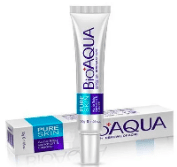
Acne vulgaris is a skin condition that affects the sebaceous glands and can result in the growth of pimples.
Acne vulgaris is classified into blackheads and whiteheads and can be caused by a variety of factors, such as genetics, skin type, oil production, and inflammation.
While there is no cure for acne that grows under the skin, there are treatments that can help to improve the condition.
Some common treatments include topical antibiotics, benzoyl peroxide, and topical corticosteroids.
How do you treat pimples that grow under the skin?
Pimples can be frustrating, but they’re not impossible to get rid of. The most common cause of pimples growing under the skin is sebum production.
Sebum is the oil that skin cells produce to keep your skin moisturized. When sebum production is excessive, it can lead to the formation of blackheads and pimples.
To treat pimples that grow under the skin, you will need to identify the cause and address it.
If sebum production is excessive, you will need to use a topical acne treatment that targets sebum production.
If blackhead or pimple pus is present, you will need to extract it with a pore cleanser and acne treatment.
Finally, if the pus is severe, you may need to see a dermatologist for further treatment. Thanks for reading!
What is a blind pimple?

Blind pimples are whiteheads that arise on the face and neck. They are small and pus-filled and can be quite frustrating to deal with because they’re difficult to see and often appear in clusters.
When should I see my healthcare provider about blind pimples?

If you are experiencing a lot of whitehead pimples and feel that they might be related to your condition of blindness, it is best to see your healthcare provider.
While there isn’t enough evidence yet linking the two, it’s always better to get an expert’s opinion.
Who might get blind pimples?

There are various skin problems that can affect people of all ages and backgrounds, but one of the most common is acne.
Acne is a skin condition caused by an excess of sebum (oil) and dead cells on the surface of the skin.
It’s usually treated with topical lotion or antibiotics, but in some cases, it might require surgery or laser treatment.
How common are blind pimples?
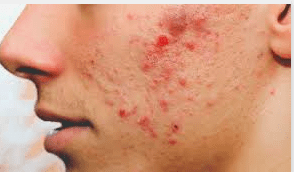
Blind pimples are a common skin condition that affects people of all ages. They tend to occur mostly on the face and neck, but can also be found on other parts of the body.
The skin around the pimple becomes red, inflamed, and bumpy due to the accumulation of pus in the follicle. The pus then seeps out through the hair follicle and fills up your pore again – causing inflammation and swelling.
What are the symptoms of blind pimples?

Blind pimples are skin cysts that generally form on the forehead, nose, cheeks, and chin. They are more common in people with oily skin and may also occur on the neck or chest.
Symptoms of blind pimples include pus discharge from the cyst, redness and swelling around it, itchiness, and a burning sensation when touched.
The pus might seep through the skin into underlying tissues or cause scars. Blind pimples can be difficult to diagnose and treat because they often go undetected for long periods of time.
How are blind pimples diagnosed?
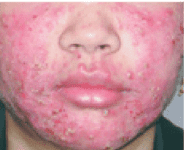
Blind pimples are a skin condition that primarily affects the face and neck. They may be red, white, black, or any color including skin tones.
The symptoms of blind pimples include acne-like nodules on the skin that often pusse and bleed easily.
The nodules may enlarge rapidly and form cysts or sebaceous follicles (located in oil glands). Blind pimples can also cause scarring if they’re not diagnosed and treated in time.
How can I prevent blind pimples?
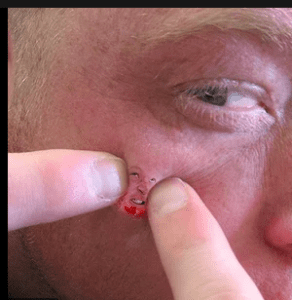
Blind pimples are a common skin condition that can be caused by several factors, including acne inflammation and sebum production.
In order to prevent them from happening in the first place, you need to control your acne inflammation and sebum production.
Here are some of the best ways to do just that: – Use topical acne treatments that address the root cause of your skin condition.
– Avoid products with benzoyl peroxide or salicylic acid as these could aggravate your skin condition further. – Follow a balanced diet that includes plenty of fruits and vegetables for antioxidant benefits.
Try avoiding processed foods, sugary drinks, and red meat as much as possible.
What can I expect if I have blind pimples?

If you’re one of the unlucky people with blind pimples, then your skin is in for an arduous and frustrating journey.
However, there are ways to make this experience a little bit easier.
Here are some tips that should help: –
Apply topical antibiotics regularly to clear up any acetogenic bacteria before it causes inflammation and further scarring Use benzoyl peroxide gel or solution as your main acne treatment option –
this will kill the acne cells while leaving the skin’s surface smooth and without blemishes. –
Avoid using harsh cleansers on your skin – they might cause irritation and redness, which only makes matters worse! Instead, opt for gentle foaming cleansers that won’t strip away protective oil layers from the skin.
How do you treat blind pimples?
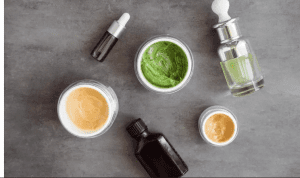
Acne can be a frustrating condition, and the causes are often unknown. However, pimples that develop under the skin can often be treated successfully with the help of a dermatologist.
Here are some of the most common causes of pimples growing under the skin:
1. Acne is usually caused by sebum and oil production, which can accumulate and block sebaceous glands.
2. Sebaceous glands secrete sebum, which is a natural oil that helps skin cells keep their oily surface.
3. When sebum accumulates and clogs the sebaceous glands, it triggers acne inflammation.
4. Various skin types can be affected by acne, and the skin surface may be oily or dry.
5. Pimples that develop under the skin are usually more severe and difficult to treat.
If you think you might have acne that’s growing under the skin, see a dermatologist for evaluation and treatment. Acne can be treated successfully
Types of pimples

Acne is a skin condition that causes blackheads and whiteheads to form.
It can be caused by many factors, but the most common ones are sebum production and hormonal changes.
Here are the three types of pimples that you’re likely to encounter: blackhead, whitehead, and cystic acne.
blackhead acne is the most common type and is caused by sebum and dead skin cells clogging the follicle.
whitehead acne is the result of inflammation of the follicle and is usually less severe than blackhead acne.
cystic acne, the rarest type, is characterized by pus and oil accumulation in the follicle and is usually the most severe type of acne.
What happens if you pop a blind pimple?
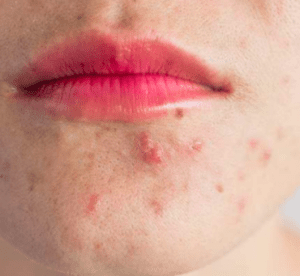
Pimples can be embarrassing and annoying, but they’re not always caused by bad skin care. In fact, many times they’re the result of skin inflammation or acne cyst.
If you pop a pimple, there’s a good chance that the pus and skin cells will spread the infection to other areas of the skin.
So, what happens if you pop a blind pimple? The pus and skin cells will seep into the surrounding tissues and cause an infection.
This is why it’s important to get acne cysts treated promptly – the earlier it’s diagnosed, the better the chances of successful treatment.
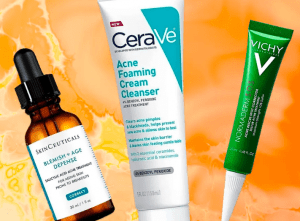
Pimples can be really frustrating, especially when they keep on coming back no matter how much you try to prevent them. Fortunately, there are some simple tips that you can follow to prevent blind pimples from growing and ruining your skin.
The first and most important step is to keep your skin clean and oil-free. This means that you should avoid using skin lotions and oils, and clean your skin with a gentle cleanser every day. Make sure that you apply sunscreen every day, and avoid going out in the sun if you can.
If you do get a pimple, the best way to treat it is to pus it and leave it to dry out. If it doesn’t go away within a few days, consult your dermatologist.
Frequently Asked Questions
What are the two most common causes of pimples growing under the skin?
The two most common causes of pimples growing under the skin are hormonal changes and inflammation. Pimples can be caused by a variety of factors, and understanding the causes is key to treating them effectively.
Here are the most common causes of pimples growing under the skin: 1. hormonal changes 2. skin inflammation 3. sebum production 4. skin irritation 5. skin sensitivity 6. skin infection 7. skin dehydration 8. skin oiliness 9. skin puberty 10. skin irritation from other skin care products
How can I prevent pimples from growing under my skin in the first place?
Pimples can happen for a lot of different reasons, but the best way to prevent them from growing is by following some basic acne prevention tips. acne sufferers should avoid sebum production, oiliness, and inflammation.
They should also use dermatologist-recommended topical acne treatments and avoid cosmetics with acne-causing ingredients.
Conclusion
If you’re looking for answers to your pimple-related questions, look no further! In this blog, we’ve outlined the different causes of pimples growing under the skin and provided treatments and advice on how to deal with them. So whether you’re looking for a cure or just want to know how to treat pimples effectively, you’ve come to the right place!
Health
Understanding the Risk Factors for Developing Preeclampsia

Understanding the Risk Factors for Developing Preeclampsia
Preeclampsia is a serious pregnancy complication characterized by high blood pressure and potential damage to organs such as the liver and kidneys.
It usually occurs after the 20th week of pregnancy and can have significant implications for both the mother and the baby.
Identifying the risk factors associated with preeclampsia is crucial for early intervention and management.
This article delves into the various risk factors, how they contribute to the development of preeclampsia and strategies for monitoring and prevention.
What Is Preeclampsia?
Preeclampsia is a condition that affects approximately 5-8% of pregnancies worldwide. It typically manifests with elevated blood pressure and proteinuria (excess protein in the urine).
If left untreated, it can lead to severe complications such as eclampsia, which involves seizures and can jeopardize both maternal and fetal health.
Risk Factors for Preeclampsia
Understanding the risk factors for preeclampsia can help in early diagnosis and management. Below are the primary risk factors associated with this condition:
1. Previous History of Preeclampsia
Women who have experienced preeclampsia in previous pregnancies are at a higher risk of developing the condition in subsequent pregnancies. The recurrence risk is approximately 20-30% if preeclampsia occurs in a previous pregnancy.
2. First Pregnancy
The risk of preeclampsia is higher in women who are pregnant for the first time. This is thought to be related to the body’s adjustment to the physiological changes associated with pregnancy.
3. Advanced Maternal Age
Women who are over the age of 35 are more likely to develop preeclampsia. The increased risk is associated with age-related changes in blood vessels and the body’s ability to manage pregnancy-related stress.
4. Multiple Gestations
Carrying more than one baby (e.g., twins or triplets) increases the risk of preeclampsia. The body’s increased demands and altered placental development contribute to this heightened risk.
5. Obesity
Obesity is a significant risk factor for preeclampsia. Excess body weight can lead to increased blood pressure and insulin resistance, both of which are associated with a higher likelihood of developing preeclampsia.
6. Chronic Hypertension
Women with pre-existing high blood pressure are at a greater risk of developing preeclampsia. Chronic hypertension can exacerbate the blood pressure problems associated with preeclampsia.
7. Diabetes
Both type 1 and type 2 diabetes are associated with an increased risk of preeclampsia. Diabetes can affect blood vessel function and increase the likelihood of high blood pressure during pregnancy.
8. Kidney Disease
Pre-existing kidney conditions can elevate the risk of preeclampsia. The kidneys play a crucial role in managing blood pressure and fluid balance, and any pre-existing conditions can compromise their function.
9. Autoimmune Disorders
Certain autoimmune disorders, such as lupus and rheumatoid arthritis, can increase the risk of developing preeclampsia. These conditions can affect the body’s immune response and vascular health.
10. Family History
A family history of preeclampsia can indicate a genetic predisposition to the condition. Women with a family history are at an increased risk compared to those without such a history.
11. Poor Nutrition
Inadequate nutrition, particularly a lack of essential vitamins and minerals such as calcium and magnesium, can contribute to the development of preeclampsia. Proper prenatal care and nutrition are crucial for minimizing risk.
12. Infections
Certain infections during pregnancy, such as urinary tract infections, can be associated with an increased risk of preeclampsia. Infections can exacerbate the inflammatory processes involved in preeclampsia.
13. High Stress Levels
Chronic stress and poor mental health can impact overall well-being and contribute to conditions like preeclampsia. Managing stress through healthy lifestyle choices and support systems is important.
Monitoring and Prevention Strategies
Early monitoring and preventive measures can help manage the risk factors associated with preeclampsia:
- Regular Prenatal Visits: Frequent check-ups with a healthcare provider can help monitor blood pressure and other indicators of preeclampsia.
- Healthy Lifestyle Choices: Maintaining a balanced diet, engaging in regular physical activity, and managing weight can reduce the risk.
- Medication: In some cases, medications such as aspirin may be recommended to lower the risk of preeclampsia, especially for women with a high risk.
- Stress Management: Techniques such as mindfulness, relaxation exercises, and counseling can help manage stress and support overall health.
- Education and Awareness: Understanding the symptoms and risk factors of preeclampsia can help in early detection and timely intervention.
Conclusion
Preeclampsia is a complex condition with multiple risk factors. By recognizing these factors and taking proactive steps, expectant mothers can work with their healthcare providers to manage their risk and promote a healthier pregnancy.
Regular prenatal care, lifestyle modifications, and stress management are key to minimizing the impact of preeclampsia and ensuring the best possible outcomes for both mother and baby.
FAQs
1. What are the early signs of preeclampsia?
Early signs of preeclampsia include high blood pressure, proteinuria, swelling of the hands and feet, sudden weight gain, and severe headaches. It’s important to report any unusual symptoms to your healthcare provider promptly.
2. Can preeclampsia be prevented?
While not all cases of preeclampsia can be prevented, maintaining a healthy lifestyle, attending regular prenatal visits, and following your healthcare provider’s recommendations can help reduce the risk.
3. How is preeclampsia diagnosed?
Preeclampsia is diagnosed through routine prenatal screenings that monitor blood pressure and urine protein levels. If preeclampsia is suspected, additional tests may be conducted to assess kidney function and other health indicators.
4. What are the treatment options for preeclampsia?
Treatment options for preeclampsia depend on the severity of the condition. They may include medications to manage blood pressure, bed rest, and in severe cases, early delivery of the baby to protect both the mother and child.
5. Can preeclampsia affect future pregnancies?
Having preeclampsia in one pregnancy can increase the risk of developing it in future pregnancies. However, many women go on to have healthy pregnancies by managing risk factors and following their healthcare provider’s advice.
References:
Health
Top 5 Immunity-Boosting Fruits to Include in Your Diet

Top 5 Immunity-Boosting Fruits to Include in Your Diet
In our quest for better health, the immune system often takes center stage. One of the simplest and most effective ways to support this vital system is through a nutritious diet.
Fruits, rich in essential vitamins, minerals, and antioxidants, can play a significant role in strengthening your immune system.
In this article, we’ll explore the best fruits for boosting immunity, backed by scientific research, and provide practical tips for incorporating them into your daily routine.
Why Immune Health Matters
The immune system is our body’s defense mechanism against harmful pathogens, including bacteria, viruses, and toxins.
A robust immune system can help fend off illnesses and infections, and a balanced diet is crucial for maintaining its optimal function.
Fruits, in particular, offer a wealth of nutrients that can enhance immune response, improve overall health, and even prevent chronic diseases.
1. Citrus Fruits: Vitamin C Powerhouses
Oranges
Oranges are synonymous with vitamin C, a crucial nutrient for immune health. Vitamin C supports the production and function of white blood cells, which are essential for fighting infections.
Just one medium-sized orange provides about 70 mg of vitamin C, meeting the daily recommended intake for most adults.
Grapefruits
Grapefruits, another excellent source of vitamin C, also contain antioxidants like lycopene, which have been linked to reduced inflammation and improved immune function.
Enjoying half a grapefruit a day can contribute significantly to your vitamin C needs.
Lemons
Lemons are versatile fruits that not only boost your vitamin C intake but also support detoxification.
Adding lemon juice to water or dishes can enhance your immune system while providing a refreshing flavor.
2. Berries: Antioxidant-Rich Superfoods
Blueberries
Blueberries are packed with antioxidants, particularly flavonoids, which help combat oxidative stress and inflammation.
These antioxidants can enhance immune function and protect against chronic diseases. A cup of fresh blueberries is a delicious way to boost your immunity.
Strawberries
Strawberries are another berry with a high vitamin C content, along with various antioxidants that contribute to overall health.
A handful of strawberries can provide a significant portion of your daily vitamin C requirement.
Raspberries
Raspberries are rich in vitamins C and E, as well as fiber and antioxidants.
These nutrients work together to support immune health and maintain digestive well-being.
Incorporate raspberries into smoothies or salads for a tasty immune boost.
4. Papaya
Papaya is an excellent source of vitamin C, vitamin A, and digestive enzymes such as papain. These nutrients contribute to a stronger immune system by supporting cellular repair and reducing inflammation.
5. Pomegranate
Pomegranates are rich in antioxidants and vitamin C, which help combat oxidative stress and boost immune function. The anti-inflammatory properties of pomegranates also support overall health and wellness.
Incorporating these fruits into your daily diet can provide essential nutrients that support immune health and help protect your body against illnesses.
Frequently Asked Questions
1. How does vitamin C boost the immune system?
Vitamin C enhances the production of white blood cells, which are crucial for combating infections and illnesses. It also acts as an antioxidant, protecting cells from damage caused by free radicals.
2. Can berries help reduce inflammation?
Yes, berries are rich in antioxidants and vitamins that help reduce inflammation and oxidative stress, which can support overall immune function.
3. What are the benefits of kiwi for immune health?
Kiwi provide a high amount of vitamin C, which supports the immune system by increasing white blood cell production. It also contains vitamin K and folate, which are essential for maintaining overall health.
4. How does papaya contribute to immune health?
Papaya is high in vitamin C and vitamin A, which help strengthen the immune system. Additionally, the enzyme papain in papaya aids in digestion and reduces inflammation.
5. What makes pomegranates beneficial for immunity?
Pomegranates are rich in antioxidants and vitamin C, which help fight oxidative stress and inflammation, thereby supporting the immune system and overall health.
References:
Healthline – Best Fruits for Boosting Immunity
Health
Effective Medications to Lower Cholesterol: A Comprehensive Guide

Effective Medications to Lower Cholesterol: A Comprehensive Guide
High cholesterol is a common health issue that can significantly increase the risk of heart disease, stroke, and other serious health conditions. Fortunately, various medications are available to help manage and lower cholesterol levels.
In this guide, we’ll explore the most effective medications for lowering cholesterol, their mechanisms of action, potential side effects, and other crucial information to help you make informed decisions about your health.
Understanding Cholesterol and Its Impact on Health
Cholesterol is a fatty substance found in your blood. Your body needs cholesterol to build healthy cells, but having high levels of cholesterol can increase your risk of heart disease.
Cholesterol travels through your bloodstream in two main types of lipoproteins:
low-density lipoprotein (LDL) and high-density lipoprotein (HDL).
- LDL Cholesterol: Often referred to as “bad” cholesterol, LDL can build up in the walls of your arteries, leading to atherosclerosis, which can restrict blood flow and increase the risk of heart attacks and strokes.
- HDL Cholesterol: Known as “good” cholesterol, HDL helps remove LDL cholesterol from your arteries, reducing the risk of cardiovascular problems.
Why Medication May Be Necessary
Even with a healthy diet and regular exercise, some individuals may still struggle to manage their cholesterol levels.
This is where cholesterol-lowering medications come into play. These medications work in various ways to help lower LDL cholesterol and, in some cases, raise HDL cholesterol.
Types of Cholesterol-Lowering Medications
1. Statins
Statins are the most commonly prescribed medications for lowering LDL cholesterol.
They work by blocking a substance your body needs to make cholesterol, thus reducing the amount of LDL cholesterol in your bloodstream.
- Examples: Atorvastatin (Lipitor), Simvastatin (Zocor), Rosuvastatin (Crestor)
- Mechanism of Action: Statins inhibit the enzyme HMG-CoA reductase, which is involved in cholesterol production in the liver.
- Common Side Effects: Muscle pain, digestive problems, increased liver enzymes
- Benefits: Statins are highly effective in reducing LDL cholesterol levels and have been shown to lower the risk of heart attacks and strokes.
2. Bile Acid Sequestrants
Bile acid sequestrants work by binding to bile acids in the intestine, preventing them from being reabsorbed. This process forces the liver to use cholesterol to produce more bile acids, thus lowering LDL cholesterol levels.
- Examples: Cholestyramine (Prevalite), Colestipol (Colestid), Colesevelam (Welchol)
- Mechanism of Action: These drugs bind bile acids in the intestines, reducing cholesterol absorption.
- Common Side Effects: Constipation, bloating, nausea
- Benefits: Effective at lowering LDL cholesterol and can be used in conjunction with statins for enhanced results.
3. Niacin
Niacin (also known as vitamin B3) helps lower LDL cholesterol and raise HDL cholesterol levels.
It works by decreasing the liver’s production of LDL cholesterol and increasing HDL cholesterol.
- Examples: Niacor, Niaspan
- Mechanism of Action: Niacin reduces the production of LDL cholesterol and increases HDL cholesterol.
- Common Side Effects: Flushing, itching, liver damage (with high doses)
- Benefits: Effective in raising HDL cholesterol and lowering LDL cholesterol.
4. Fibric Acids
Fabric acids, or fibrates, are primarily used to lower triglyceride levels and can also help increase HDL cholesterol levels.
They work by activating a protein that helps break down triglycerides in the blood.
- Examples: Fenofibrate (Tricor), Gemfibrozil (Lopid)
- Mechanism of Action: They activate peroxisome proliferator-activated receptors (PPARs), which help in the breakdown of triglycerides.
- Common Side Effects: Muscle pain, liver abnormalities, gastrointestinal issues
- Benefits: Particularly useful for individuals with high triglyceride levels.
5. PCSK9 Inhibitors
PCSK9 inhibitors are a newer class of cholesterol-lowering medications that help the liver remove LDL cholesterol from the bloodstream more effectively.
- Examples: Alirocumab (Praluent), Evolocumab (Repatha)
- Mechanism of Action: These drugs inhibit the PCSK9 protein, which normally reduces the liver’s ability to remove LDL cholesterol from the blood.
- Common Side Effects: Injection site reactions, flu-like symptoms
- Benefits: Very effective at lowering LDL cholesterol, especially in individuals who cannot tolerate statins.
6. Cholesterol Absorption Inhibitors
Cholesterol absorption inhibitors work by blocking the absorption of cholesterol from the diet, which reduces the amount of cholesterol that enters your bloodstream.
- Examples: Ezetimibe (Zetia)
- Mechanism of Action: They inhibit the absorption of cholesterol in the small intestine.
- Common Side Effects: Diarrhea, stomach pain, muscle pain
- Benefits: Can be used alone or in combination with statins to lower LDL cholesterol.
Choosing the Right Medication
The choice of medication depends on various factors, including your overall health, the specific cholesterol issue you have, and how well you tolerate certain medications.
Your healthcare provider will help you determine the most appropriate medication based on your individual needs and medical history.
Lifestyle Modifications to Complement Medication
While medications are effective in managing cholesterol levels, they work best when combined with lifestyle changes.
Consider incorporating the following into your routine:
- Healthy Diet: Focus on a diet rich in fruits, vegetables, whole grains, and lean proteins while avoiding saturated fats and trans fats.
- Regular Exercise: Engage in at least 150 minutes of moderate aerobic activity or 75 minutes of vigorous activity per week.
- Weight Management: Achieve and maintain a healthy weight to help control cholesterol levels.
- Avoid Smoking and Limit Alcohol: Both smoking and excessive alcohol intake can negatively impact cholesterol levels.
Monitoring and Follow-Up
Regular follow-up with your healthcare provider is crucial to monitor your cholesterol levels and assess the effectiveness of your medication. Your doctor may adjust your treatment plan based on your progress and any side effects you experience.
Final Thoughts
Managing cholesterol is a critical aspect of maintaining cardiovascular health.
With a variety of effective medications available, it’s possible to lower LDL cholesterol levels and reduce the risk of heart disease and other complications.
However, medication alone is not a cure-all; combining it with lifestyle changes is essential for optimal results.
Always consult your healthcare provider for personalized advice and treatment plans tailored to your specific needs.
Frequently Asked Questions (FAQs)
1. What is the primary goal of cholesterol-lowering medications?
Cholesterol-lowering medications primarily aim to reduce LDL cholesterol levels in the blood, thereby decreasing the risk of cardiovascular diseases such as heart attacks and strokes.
2. Are there any natural alternatives to cholesterol-lowering medications?
Yes, some natural alternatives include dietary changes (e.g., increased intake of soluble fiber and omega-3 fatty acids), regular exercise, and weight management. However, these should be used in conjunction with, not as a replacement for, prescribed medications.
3. How long does it take for cholesterol-lowering medications to show results?
The effects of cholesterol-lowering medications can usually be observed within a few weeks, but it may take several months to see significant changes in cholesterol levels and overall cardiovascular risk.
4. Can cholesterol-lowering medications cause side effects?
Yes, some common side effects include muscle pain, digestive issues, and liver enzyme changes. It’s important to report any side effects to your healthcare provider for proper management.
5. Can I stop taking my cholesterol medication if my levels improve?
It’s important to consult your healthcare provider before making any changes to your medication regimen. Discontinuing medication without medical advice can lead to a rebound in cholesterol levels and an increased risk of heart disease.
References
Cholesterol-lowering Medications
-

 Trending Stories1 year ago
Trending Stories1 year agoCDC: 1 in 4 Americans Still COVID-Free by End of 2022
-

 Health5 years ago
Health5 years agoMeghan Trainor Shares Motivational New Song ‘Blink’
-

 Health2 years ago
Health2 years agoHow Long Does Monkey Pox Last Before It Surfaces in the Body?
-

 Health2 years ago
Health2 years agoWhat Causes Swollen Body? Understanding Edema and its Triggers
-

 Health3 years ago
Health3 years agoNutrition and the Importance of a Fitness Program – 3 Things to Know
-

 Health3 years ago
Health3 years ago5 Weird Reasons Why Pimples Disappear After Marriage
-

 Health3 months ago
Health3 months agoHow Do Pawpaw Seeds Support Cardiovascular Health?
-

 Health2 years ago
Health2 years agoHealth Benefits Of Pawpaw Seed? 7 Things To Know






